Ten years ago on Thursday 16th May 2013 I was pleased to attend the opening of the exhibition Estuary, held to mark the 10th anniversary of the Museum of London Docklands at West India Quay, a short walk from Canary Wharf. I was delighted to be one of the dozen artists in various media to be included, with ten of my panoramic images from my work on the north and south banks of the Thames.
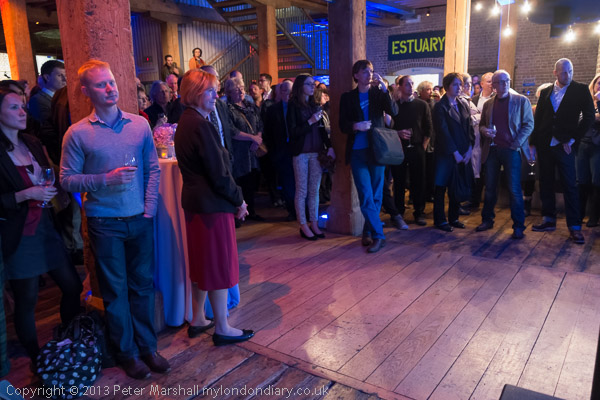
I’d begun photographing the lower reaches of the Thames back in the 1980s, then working largely in black and white and my work concentrated on the then fast disappearing industrial sites along the river. At first I worked on the Kent bank on the south of the river, having a particular interest in the cement industry that occupied and had radically changed much of area between Dartford and Gravesend. Later I also worked along the north bank.
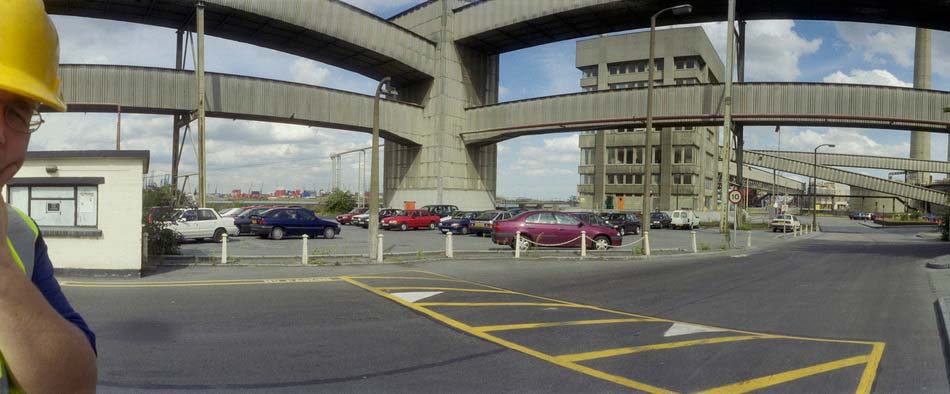
Estuary is a term that has various definitions, and both its upstream and downstream limits have, as Wikipedia states, “been defined differently at different times and for different purposes.” For my own purposes it has been rather elastic, usually beginning at the Thames Barrier and going east as far as it was convenient to travel by public transport, on foot or by bicycle from convenient stations. In earlier years I went further along the Kent bank by car in some outings with friends including Terry King as far as Sheppey.
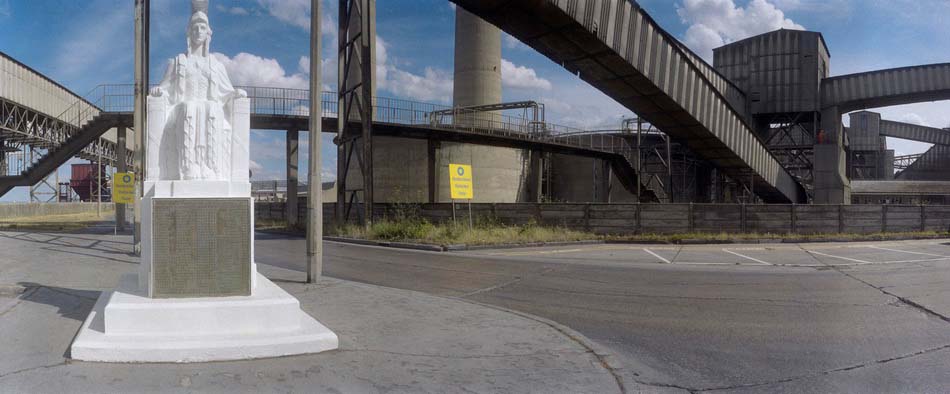
The exhibition had come as a surprise. The ten picture in it were from around a hundred images the Museum of London had bought from various of my projects for its collection a few years earlier and I think the first I knew about it was when I received the invitation to the opening, or perhaps by an email a couple of weeks before that.
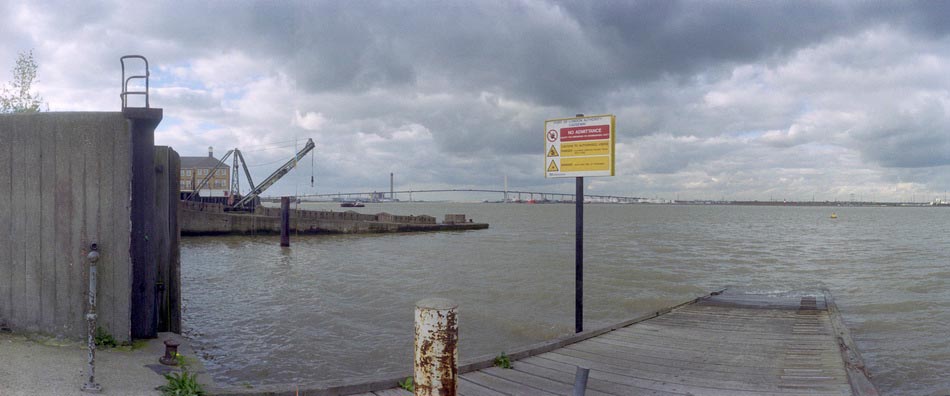
These pictures all dated from the early years of this century, those from Kent in 2000 and from Essex in 2004 and all were in panoramic format. In 2000 I was working with two swing lens cameras, a Japanese Widelux F8 and a much cheaper Russian Horizon 202. Both work with rotating lens and a curved film plane, invented by give Friedrich von Martens in his Megaskop-Kamera in 1844, but instead of the daguerrotype plates he worked with use standard 35mm film, producing negatives around 56x24mm.
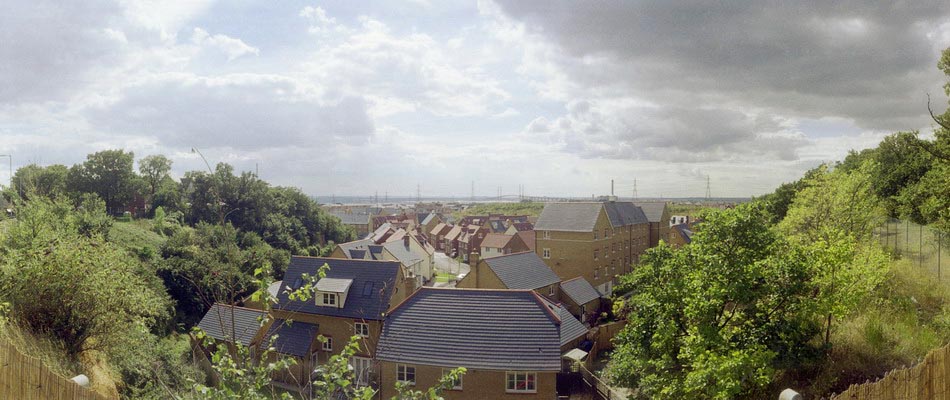
The two cameras have a similar field of view horizontally around 130 degrees and have a cylindrical perspective which renders lines parallel to the film edges straight but gives an increasing curvature to horizontal lines away from the centre of the image. The image quality of the two is very similar but the cheaper camera has a rather more useful viewfinder.
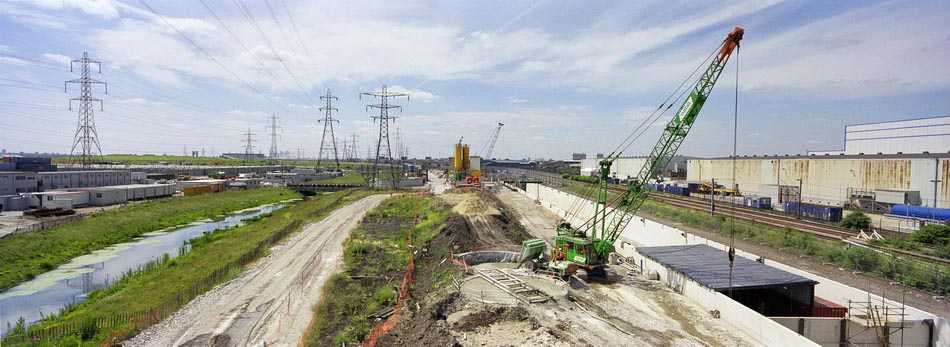
By 2004 I had two further pieces of equipment which extended my panoramic photography. One was a new camera, the Hassleblad X-Pan, which had generally received rave reviews. I found it rather disappointing at first and it was only after I added the 30mm wideangle lens that it became useful for me. The X-Pan is a standard rectilinear camera design but gives negatives 65x24mm rather than the normal full-frame 36x24mm. The horizontal angle of view it produces with the 30mm is at the limits of rectilinear perspective, before stretching at the edges becomes too apparent, and is considerably less than the swing lens cameras at 94 degrees. The lens comes with a separate viewfinder that fits on the top of the camera, but does make operation a little less convenient.
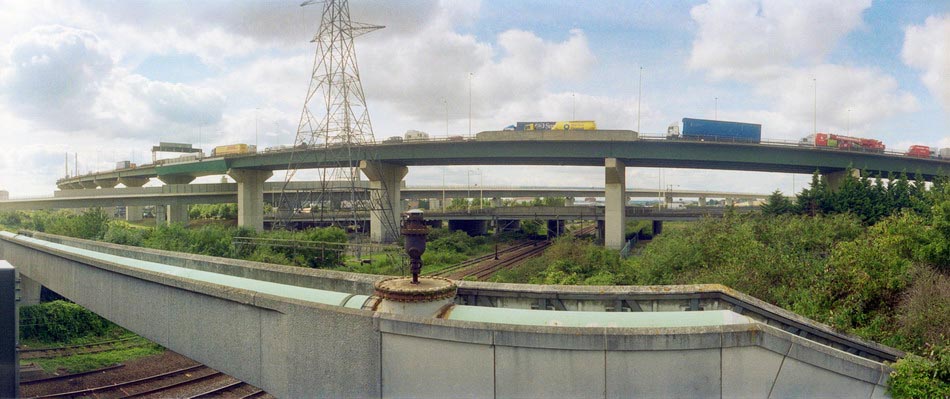
The second, and very important for working along the north bank was a Brompton folding bicycle, which enabled me to travel the greater distances needed there. Of course I also used this and the X-Pan for later pictures elsewhere.
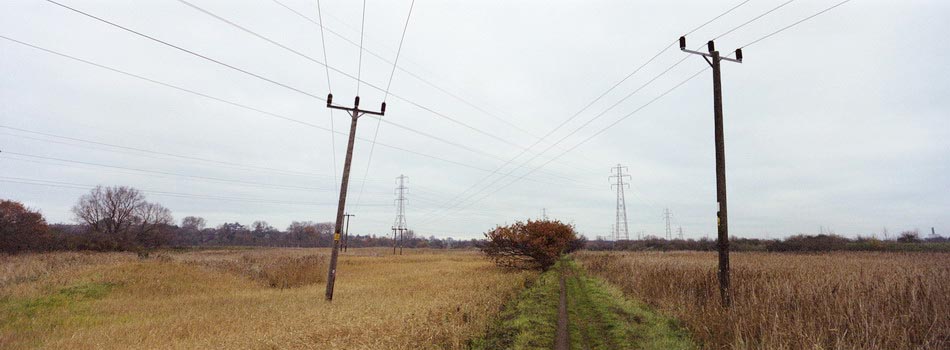
You can see more of these pictures in two sections of the Urban Landscapes web site, which also includes work by other photgraphers, both British and overseas. Some of the pictures I’ve chosen for today’s post were in the Estuary show, but others were not – I have a rather larger body of work to select from than the Museum, some of which appears in my book Thamesgate Panoramas.
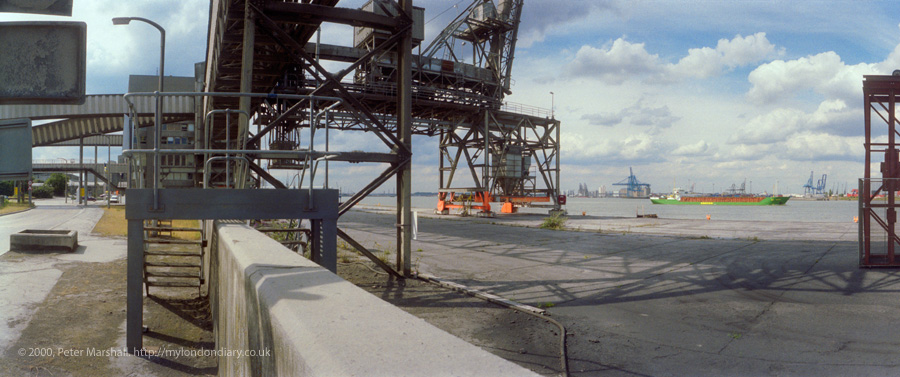
The site has separate sections on the Thames Gateway in Essex and Kent, as well as from my Greenwich Meridian project in 1994-6 and a wider selection of panoramic work from around London from 1996-2005, though there is much more that I still have to put on-line. Some is also now on Flickr.
One thought on “Estuary”